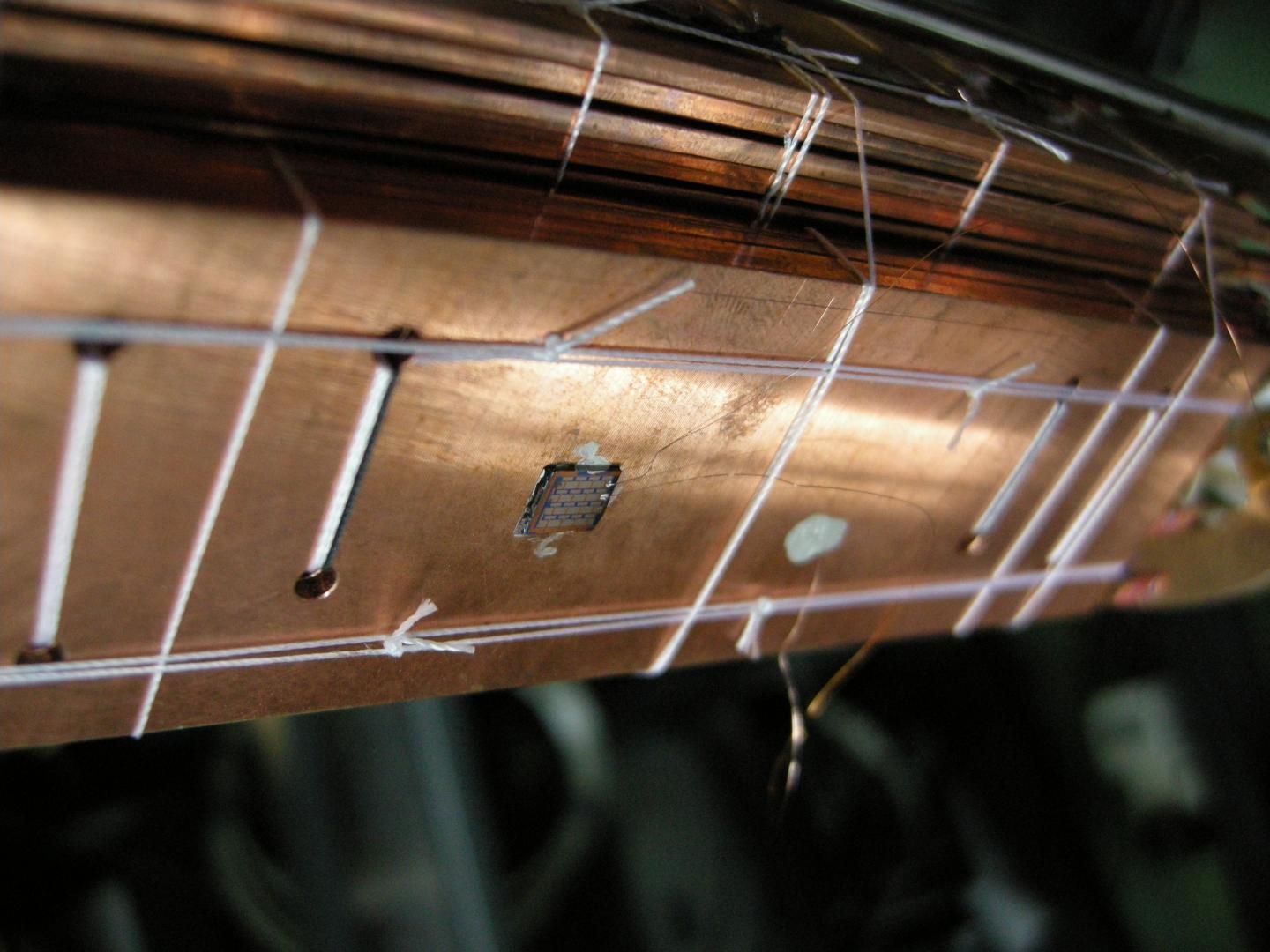
Updated | Physicists have adapted a nanoelectric chip to drop to a temperature lower than three millikelvin—the closest anything's ever gotten to absolute zero, believed by many experts to be the coldest temperature that can physically exist.
Absolute zero refers to zero degrees Kelvin, which corresponds to -459.67 degrees Fahrenheit. At that threshold, particles—which vibrate with greater kinetic energy the hotter they become—come to a standstill, which is why scientists think nothing could ever become colder. No energy can be less than nothing, as Scientific American put it.
A collaboration between physicists from research institutes in Switzerland, Germany and Finland achieved the record low by combining two magnetic cooling processes. When a magnetic field applied to a given system is ramped down, according to a University of Basel press release, it can facilitate the necessary kind of temperature drop so long as the heat produced by the magnetization itself is first removed through some additional process.
By outfitting the chip with a second magnetic cooling system, the team was able to cool not just the nanochip but the electrical connections within it. They believe they'll be able to use the same process to reach the "magic" threshold.
#News "New Device Lets Scientists Explore Physics Near Absolute Zero" via #Futurism | https://t.co/w9KweoIpAE pic.twitter.com/u5gG1q7zNO
— Jorge Luis Lopez Esq (@lopezgovlaw) December 28, 2017
Dominik Zumbühl, a physicist at the University of Basel, told Newsweek that scientists have predicted such ultralow temperatures are home to entirely new types of matter.
"Going to lower temperatures is having a microscope with a better resolution...and who knows what will become visible?" Zumbühl told Newsweek over email.
The temperature the physicists achieved corresponds to -459.665 degrees Fahrenheit—less than one thousandth of a degree Kelvin above absolute zero. A paper describing the work was published in the scientific journal Applied Physics Letters.
The team is able to maintain the temperature for seven hours, meaning there's enough time to conduct any number of experiments to try to better understand the properties of such an environment. At such extreme lows, the regular laws of nature come to a dead end, and the abstract world of quantum physics takes over.
Despite the conventional understanding of absolute zero, research has shown that colder temperatures can exist. Particles that cold might not retain energy as it's understood by classical physics, but could be explained with quantum physics, the sort of Wild West of scientific theory where the normal rules cease to apply.
In 2013, scientists created an ultracold quantum gas comprising potassium atoms that they brought to "negative temperatures," a realm below absolute zero. By using magnetic fields to manipulate the atoms' potential as well as kinetic energy, the scientists created "negative pressure" in the interactions between the atoms, causing them to attract each other more than they repelled each other.
"A better understanding of temperature could lead to new things we haven't even thought of yet," Ulrich Schneider, a physicist at the Ludwig Maximilian University in Munich, Germany, told Live Science. "When you study the basics very thoroughly, you never know where it may end."
This article has been updated to include a comment from physicist Dominik Zumbühl.
Uncommon Knowledge
Newsweek is committed to challenging conventional wisdom and finding connections in the search for common ground.
Newsweek is committed to challenging conventional wisdom and finding connections in the search for common ground.
About the writer
Kastalia Medrano is a Manhattan-based journalist whose writing has appeared at outlets like Pacific Standard, VICE, National Geographic, the Paris Review Daily, ... Read more
To read how Newsweek uses AI as a newsroom tool, Click here.








